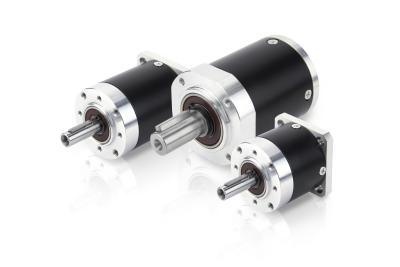
For applications that require a high torque, Nanotec offers new planetary gearboxes in two sizes and many reductions: the GP42 gearbox is designed for all motors with NEMA 17-flange, as well as the DF45 external rotor motors from Nanotec. The GP56 gearbox can be combined with all brushless DC and stepper motors in sizes NEMA 23 and 24 (56/60 mm). To increase efficiency and service life when subjected to high axial and radial loads, the GP56 is also available with a reinforced output bearing and planetary gears on needle bearings.
Both gearbox series are offered in one- and two-stage versions with a rated torque between 1.8 and 23.5 Nm. Their maximum gear backlash is 0.95°.
By using simulation-based design, the toothing, materials and hardening processes could be significantly improved. The high-torque gearboxes therefore achieve a considerably higher torque than gearboxes of comparable design. In addition, their modular structure enables fast and easy adaptation to individual customer requirements.
Contact Details
Related Glossary Terms
- backlash
backlash
Reaction in dynamic motion systems where potential energy that was created while the object was in motion is released when the object stops. Release of this potential energy or inertia causes the device to quickly snap backward relative to the last direction of motion. Backlash can cause a system’s final resting position to be different from what was intended and from where the control system intended to stop the device.
- hardening
hardening
Process of increasing the surface hardness of a part. It is accomplished by heating a piece of steel to a temperature within or above its critical range and then cooling (or quenching) it rapidly. In any heat-treatment operation, the rate of heating is important. Heat flows from the exterior to the interior of steel at a definite rate. If the steel is heated too quickly, the outside becomes hotter than the inside and the desired uniform structure cannot be obtained. If a piece is irregular in shape, a slow heating rate is essential to prevent warping and cracking. The heavier the section, the longer the heating time must be to achieve uniform results. Even after the correct temperature has been reached, the piece should be held at the temperature for a sufficient period of time to permit its thickest section to attain a uniform temperature. See workhardening.
